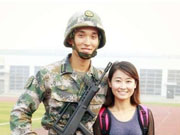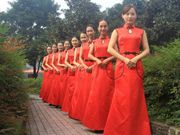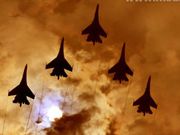Helmet
In 1994, the QGF02 helmet, China's first non-metallic helmet was successfully developed. The material of the helmet is Kevlar, featuring a lower weight but high anti-bomb rate. In an experiment conducted by China’s military, the QGF02 helmet outperformed the U.S. military's PASGT helmet.
As the helmet becomes soft, the PLA’s combat thought is also changing. No head-on, but focus more on strategies including “keeping a low profile” and “overcoming hardness by softness”.
One of the most significant changes on the battlefield in the new century is the high degree of information in soldiers’ individual equipment. But apparently, the QGF02 helmet was not designed to adapt to the change, and there are no default interfaces for electronic equipment and fixtures while the U.S. PASGT helmet has. It is just a helmet. “A helmet that only has the lowest level of protection”, said a military fan.
However, even though the QGF02 helmet was developed 20 years ago, it is still the advanced equipments for a minority of soldiers. Two years ago, the company where Soldier Wang Fujian serves was equipped with this “new type of helmet”. Soldiers of other companies were very jealous.
“It's a lot more comfortable than the old helmet.” When Wang Fujian’s cervical vertebra enjoyed the comfortableness from the 1,580-yuan helmet, he was about to bid farewell to the barracks.
Wang Fujian, a soldier who has joined the army for 16 years, still loves the GK80 helmet. And for those veterans who had participated in the 1979 border war of self-defense, GK80 is a belated “savior”.
In the 1960s and 1970s, the helmet is considered as “equipment of the weak” and was not included in the list of armaments for Chinese soldiers.
Thus, in the 1979 border war of self-defense, PLA soldiers without helmet paid a terrible price: death rate caused by head and neck injuries reached 50.8 percent, 1.6 times than that of U.S. soldiers in the World War II.
The blood of these soldiers prompted the development and production of the PLA’s first helmet “GK80”, which was rushed to the battlefield for soldiers. In the subsequent battles, GK80 helmet has significantly lowered the PLA’s casualty rate.
The GK80 helmet uses bullet-proof steel and weighs 1.25 kg. Every time a soldier wears the helmet, it feels like he is putting three bottles of mineral water on his head.
The weight can reduce battlefield mortality but increase the probability of cervical vertebra injury in training fields.
In addition, although the thermal effect of the steel is convenient for soldiers to use the helmet as cooking pot in wartime, but in the summer and winter, it might become a disaster. And it is easy to become the enemy’s target of shooting.
In the wave of information warfare, the PLA finally upgraded its helmets into "information module helmet" with interfaces and fixtures. But at this time, the U.S. military has been considering how to make the helmet more intelligent and how to make the helmets the "second brain" of soldiers.
 |  |

 My darling in military academy, you are the most beautiful one
My darling in military academy, you are the most beautiful one Students trained to become Miss Etiquettes in E China
Students trained to become Miss Etiquettes in E China Through a 20-year lens: Relocated three gorges residents then and now
Through a 20-year lens: Relocated three gorges residents then and now The birth of long tracks for high speed railway
The birth of long tracks for high speed railway Steel wire netting human model up high above Geneva river
Steel wire netting human model up high above Geneva river Eye-catching contestants in International beach bodybuilding competition
Eye-catching contestants in International beach bodybuilding competition 2014 Victoria's Secret Fashion Show
2014 Victoria's Secret Fashion Show Who is the most beautiful one? University and College etiquette teams in Sichuan
Who is the most beautiful one? University and College etiquette teams in Sichuan Excellent photos of Zhuhai Air Show
Excellent photos of Zhuhai Air Show Hot girls draw crowds at motor show in SW China
Hot girls draw crowds at motor show in SW China
Day|Week|Month